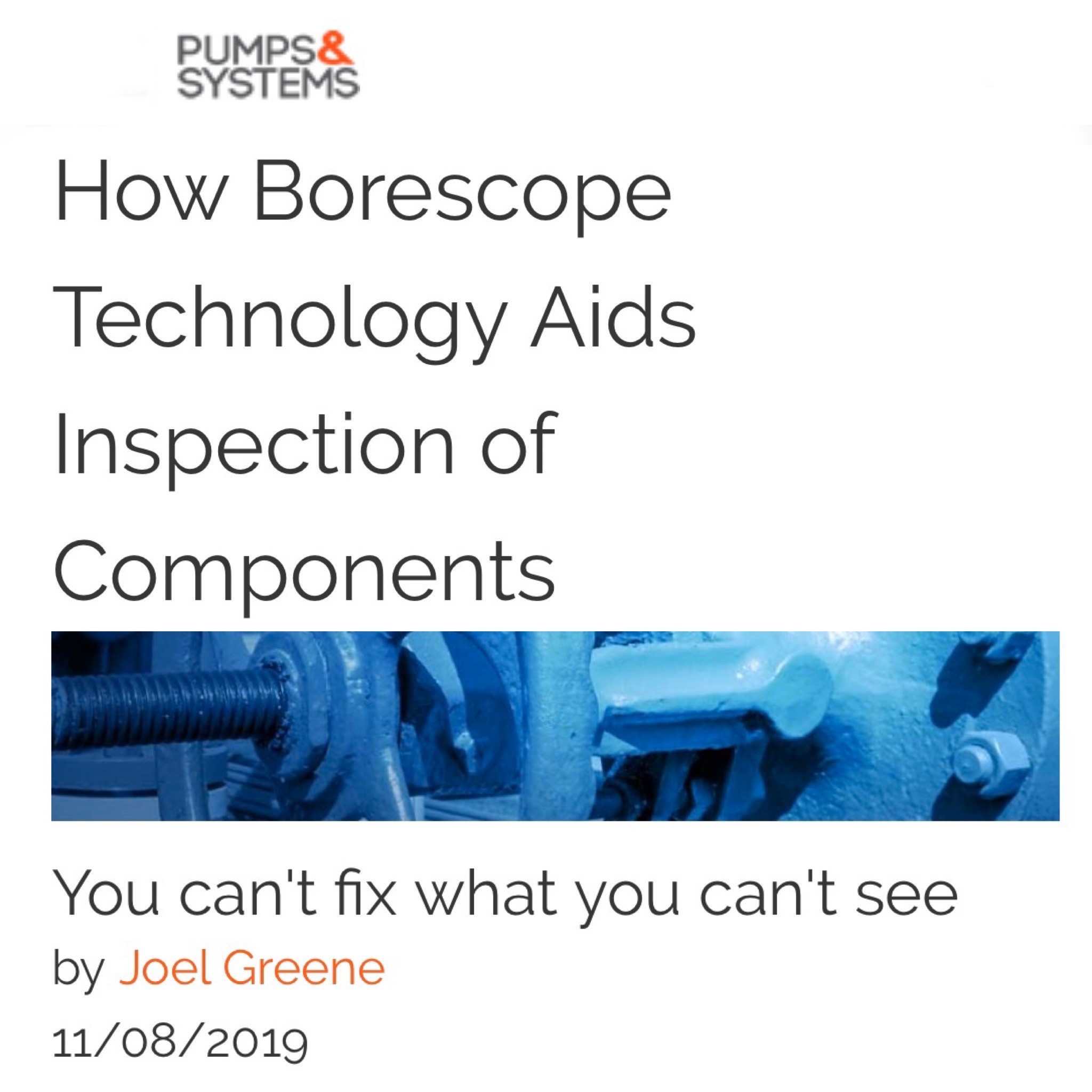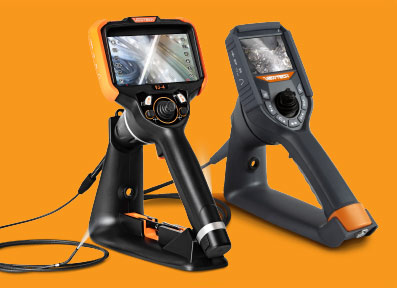Articles Written for Industry Publications

PUMPS & SYSTEMS
How Borescope Technology Aids Inspection of Components
You can’t fix what you can’t see
By Joel Greene
With our extensive video borescope knowledge, ViewTech | RF System Lab discussed how the technology of borescopes can aid the inspection of components with Pump & Systems.
To read the full article on Pump & Systems website, please go here, view the PDF version here or read the text version below…
November 8, 2019
Joel Greene
Pick up any back issue of Pumps & Systems magazine and there is a trove of articles focused on monitoring, maintaining, repairing or otherwise optimizing every variety of pump system, sub-assembly and component. Why is that? Why is so much of our time and attention allocated to this subject matter? It is because selecting, purchasing and installing a pump is only the beginning of the story, not the end.
The cost of ownership of a pump and the overall system, or function, into which it is integrated, has to include the cost of keeping that pump and system predictably operational over its lifetime. Downtime costs money, and unscheduled downtime from a sudden failure can cost big.
In the never-ending quest to improve monitoring and maintenance outcomes, lower repair costs and reduce downtime, the use of video borescope technology can prove indispensable. These instruments have improved over the past five years, driven by the miniaturization of image sensors, optical lenses, LEDs and micro-EDM techniques. The end result is a portable, easy-to-use diagnostic tool that allows a technician to gain visual access to internal components without the need for disassembly—all that is required is a small access port through which the borescope “insertion tube” can be passed.
Then & Now
Experienced end users may remember when the term “borescope” referred to a small-diameter, rigid-tube instrument with an eyepiece on one end and an angled mirror on the other. These are still used for certain straight-line applications, such as rifle barrel or small dimension casting.
And while modern, video-based borescopes are used to achieve essentially the same end—to gain visual access to an obscured area—that is where the similarities to early, rigid borescopes end. Today’s video-based borescopes feature video graphics array (VGA) or high definition (HD) resolution cameras, super bright, distally mounted LEDs for illumination, onboard photo and video capture capability, and, perhaps most importantly, joystick-controlled camera articulation. These features help users see and steer through the internal area to the point of interest, clearly examine it and visually document the condition of target components.
Borescope Applications
The main limiting factor in determining whether a borescope can be used in any specific application is the diameter of the insertion tube. A smaller diameter insertion tube can fit through smaller access ports and navigate narrower passageways than a larger diameter insertion tube.
Using VGA camera resolution as a benchmark, technology over the past 20 years has shrunk insertion tube diameters from 6 millimeters (mm) to 3.9 mm to 2.8 mm, thus allowing visual access to more components in tighter spaces than before. Using a video borescope with a flexible, small insertion tube, technicians can inspect and visually record the condition of bearings, races, seals, gears, vanes and turbine blades, with minimal or no disassembly.
Borescope Selection
Every video borescope comes with a base unit, which houses the printed circuit board (PCBs), menu buttons, display monitor, batteries and other standard components. The insertion tube attached to the base unit is available in a wide variety of lengths and diameters. When deciding which type of borescope is right for a particular application, the key selection criteria are insertion tube length and diameter.
Selecting the right insertion tube requires a thorough knowledge of the equipment to be inspected:
Where are the insertion tube access ports?
How far are these access ports from the components?
Is it a straight shot from the access port to the inspection target area, or are there bends and curves along the way?
What is the diameter of the pathway to the target area, and how much room is available to maneuver the camera once operational?
After these types of questions are answered, choose an insertion tube with the shortest length and largest diameter that will allow you to conduct inspections. Why? Because although insertion tubes can run up to 25 feet in length, if the inspection only requires a 5-foot insertion tube, the extra length can become cumbersome to manage and adds unnecessary cost. And, all other things being equal, a larger diameter insertion tube is more rugged than a smaller diameter insertion tube, will deliver higher light output and, often, higher image resolution.
Best Practices
A well-designed video borescope has intuitive operator controls and requires little training to learn how to use. That said, there is a right way and a wrong way to handle a video borescope.
First and foremost, remember there are a lot of electronics and small components in a borescope—do not treat it like a hammer, and be careful with the camera/LED module at the end of the tube. Use the camera as well as the “feel” of any resistance against the insertion tube, to help guide into and out of the inspection area, thus avoiding sharp edges that could catch on the camera or bending section. Finally, take more photos and video to document the inspection than may be needed. These are easy to delete later, but it is harder to go back and repeat an inspection.
Do the Homework
Video borescope technology is being adopted by more companies in more industries than ever before. This is the natural result of cameras and LEDs getting continually smaller, permitting access to more and tighter spaces inside machinery. That being said, every situation is different, and the only way to be sure a borescope is suitable is to try it. Any reputable borescope company should provide a free on-site evaluation.
Joel Greene is a sales consultant at ViewTech Borescopes. For more information, visit www.viewtech.com.
Request a Free Demo Unit
Check the box in the form below and one of our representatives will arrange a free demo unit.
Call Us at 231-943-1171
– Or –
Fill out the form below and one of our representatives will contact you.










